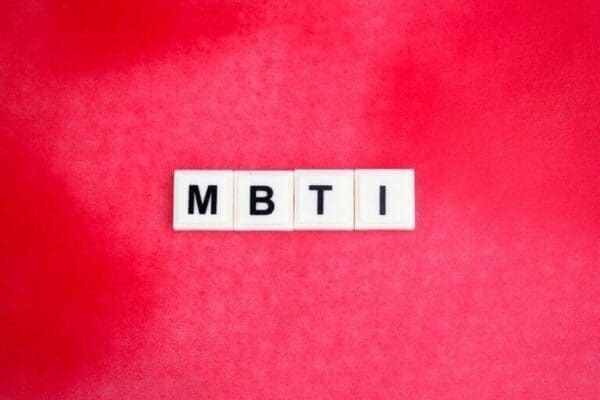MBM Glossaries: Myers Briggs Definition
This glossary contains our Myers Briggs definition and, in particular, a list of terms frequently used when discussing the Myers-Briggs Type Indicator (MBTI). Meanwhile, for an in-depth guide to how your business can benefit from identifying the personality types of you and your employees, visit our Ultimate Guide to Myers Briggs.
The first Myers Briggs Definition is ability; in short, having the means or skill to do something.
A person who can attune to both his or her introverted and extroverted nature. In fact, while not included in the original MBTI exam, ambiverts are the product of dynamic and changing human behaviour.
In short, a person who conducts evaluations, in particular, on a team or individual.
The secondary process, or criterion in a person’s MBTI profile that functions to support the dominant process.
A prejudice for or against an idea, person, or situation.
The founder of analytical psychology. In fact, Jung, a Swiss Psychiatrist was one of the first supporters of Sigmund Freud and his interests in the subconscious. Later, he began developing his own psychoanalytic theories after disagreeing with some of Freud’s theories including the Oedipus Complex.
The eight-character traits observed by Carl Jung were then developed by Isabel Myers-Briggs and Katharine Briggs into the MBTI.
Thinking or feeling fuels the motivation behind a person’s decision-making skills.
Not using cognitive functions when doing an MBTI assessment. Indeed, free online exams usually skip this step and as a result, may not yield completely accurate results.
I am text block. Click edit button to change this text. Lorem ipsum dolor sit amet, consectetur adipiscing elit. Ut elit tellus, luctus nec ullamcorper mattis, pulvinar dapibus leo.
The main process largely governs all other processes or criteria in the MBTI. In particular, this can either be Introversion or Extroversion.
An individual that prefers to be social and enjoys external stimuli. Furthermore, and as opposed to introverts, extroverts thrive and enjoy large gatherings and being around strangers. Indeed, Extraversion is one of the first criteria in the MBTI.
The fourth function in an individual’s stack.
Your physical and mental ability to face the world. For example, in MBTI, a person may find they feel refreshed when interacting with others as with the case of extroverts. Or in the quiet, meditative recluse away from the crowd as introverts would.
Extroverted, Intuition, Feeling, Judging. Generally, accounts for about 2.5%.
Extroverted, Intuition, Feeling, Perceiving. Generally, accounts for about 8.1%.
Extroverted, Intuition, Thinking, Judging. Generally, accounts for about 1.8%.
Extroverted, Intuition, Thinking, Perception. In particular, it accounts for about 3.2%.
Extroverted, Sensing, Feeling, Judging. Accounts for about 12.3%.
Extroverted, Sensing, Feeling, Perceiving. Accounts for about 8.5%.
Extroverted, Sensing, Thinking, Judging. Accounts for about 8.7%.
Extroverted, Sensing, Thinking, Perceiving. Accounts for about 4.3%.
Introverted, Intuition, Feeling, Judging. Accounts for about 1.5%.
Introverted, Intuition, Feeling, Prospecting. Accounts for about 4.4%.
Introverted, Intuition, Thinking, Judging. Accounts for about 2.1%.
Introverted, Intuition, Thinking, Perceiving. Accounts for about 3.3%.
Introverted, Sensing, Feeling, Judging. Accounts for about 13.8%.
Introverted, Sensing, Feeling, Perceiving. Accounts for about 8.8%.
Introverted, Sensing, Thinking, Judging. Accounts for about 11.6%.
Introverted, Sensing, Thinking, Perceiving. Accounts for about 5.4%.
A preference in MBTI’s Judging criteria where an individual, in particular, takes into consideration people’s emotions and special circumstances.
A person who prefers the quiet as opposed to loud external stimuli. Furthermore, these individuals take pleasure in having alone time. Also, often avoids small talk, and prefers small intimate groups rather than large social gatherings.
A preference when absorbing information wherein the individual pays more attention to the unseen. In particular, they create links or rely on implied meanings.
An American psychological theorist who developed the Myers-Briggs Type Indicators (MBTI), along with her mother Katharine Cook Briggs. In fact, it was a means to help understand and work with human differences. In particular, their work was largely based on psychiatrist Carl Jung’s work.
How decision-making is influenced by an individual’s preferences which could be Thinking or Feeling.
Mother of Isabel Briggs Myers and co-developer of the Myers-Briggs Type Indicator. In spite of not being a trained psychologist, Katharine introduced the works of Jung to her daughter Isabel and would later use it largely as a foundation of the MBTI.
How a person chooses to organise his or her life whether through Judging or Perceiving.
The Myers-Briggs Type Indicator or MBTI is a means to determine, in particular, personality trait preferences. Katharine Cook Briggs first began exploring personalities in 1917. Then, her theories would be empowered by Carl Jung’s works. In particular, this was possible when English translations of the psychologist’s work became available in 1923. Meanwhile, She would share her findings with her daughter Isabel Briggs Myers. Generally, it is her daughter who would continue to develop what we know today as the MBTI.
Simultaneously doing different tasks or taking on multiple roles and duties.
The belief is that an individual’s intelligence, personality, and other traits are, in particular, determined by things such as his or her genes and, also, any other inherited traits.
A long-held debate in psychology that, specifically, discusses which is more influential in human behaviour; inherited or learned traits.
A theory that suggests people’s personalities can be heavily influenced by their environment. Specifically, how it shapes who they become as a person despite genetic factors.
Another Myers Briggs Definition is perceiving; how the outside world is taken in or perceived. In MBTI, a person can prefer to interpret the world through Sensing or Intuition.
In MBTI, a personality type is a collection of an individual’s natural preferences. In particular, these types are categorised into 16 behavioural patterns that the test uses.
Favouring a certain response, behaviour, outlook, or approach as opposed to other equally effective alternatives. Indeed, the MBTI aims to identify preferences and work with the subconscious to attain optimum performance.
Preconceived biases and unfavourable opinions are often without basis and, usually, may cause harm when left unresolved.
A test devised to measure an individual or a group’s personalities and, also, preferences.
A preference when taking in information from the outside world that opts to utilise all five senses.
Over-generalising traits, ideas, or behaviour to a certain group of people. While MBTI, like many other psychometric tests, aims to determine preferences, they are, however, not meant to generalise individuals.
The third function in a person’s MBTI stack.
A judging preference that favours logic and consistency.




